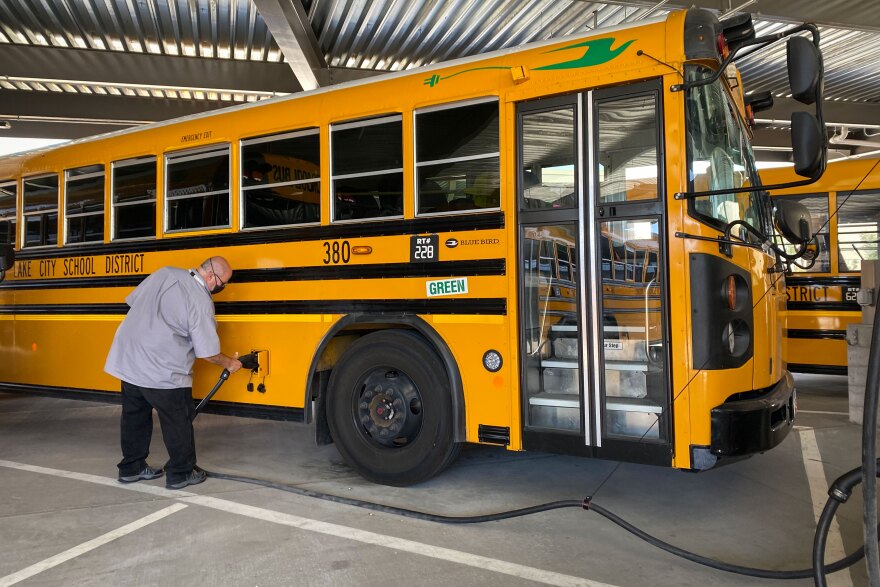The Environmental Protection Agency has launched a new rebate program to help school districts around the country replace old, soot-spewing buses with cleaner, more efficient versions.
The program, which launched in late May, provides $5 billion over the next five years that districts can apply for to buy low or zero-emissions vehicles.
The vast majority of the country’s nearly 500,000 school buses run on diesel fuel. One study found that particulate matter from the buses was 5 to 10 times higher than average levels. Children are particularly vulnerable to the effects of dirty air, which can affect their brain development, outcomes in school and lead to long-term illnesses.
Many districts around Utah are eyeing the program, both as a way to limit the impacts of pollution and to save on fuel costs. While many have added cleaner-burning vehicles to their fleets, which run on compressed natural gas and propane, the Salt Lake City School District is the only one that has electric buses.
Eight of its 100 buses are fully electric, thanks to a partnership with the Utah Department of Environmental Quality aimed at reducing emissions in areas with high pollution levels like Rose Park.
Ken Martinez, SLCSD’s transportation director, said those grants are critical to helping districts upgrade their fleets. The price of a new bus is close to $440,000. He hopes to get another 25 buses from the EPA program, which he said could be doable as other districts might be more likely to opt for CNG or propane vehicles first.
“It’s a big learning curve,” Martinez said of the adjustments needed to fuel and operate electric buses. “I don't see a lot of people wanting to really dive in. It's unknown to them. They don't know the infrastructure involved. But that's why we want to gobble up everything we can.”
The benefits of clean buses have made the initial upfront effort worth it, Martinez said. They are virtually silent, which has led to a more peaceful ride for students and drivers. They’re actually so quiet the district requested noise generators be installed — which make a kind of electric whirring sound — so that students can hear the bus when it’s approaching.
The potential health and environmental impacts are also huge, said Daniel Mendoza, a professor at the University of Utah who studies air quality. While he has not measured the impact of the district’s electric buses, he has modeled the potentially substantial benefits of electrifying the state’s public transit system. Utah DEQ also estimates that electrifying all school buses along the Wasatch Front would reduce pollutants by nearly 41,000 tons and diesel use by more than 4.1 million gallons.
“We know that schools are one place kids basically go every single day,” Mendoza said. “Reducing a sort of constant or well-known pollution exposure is going to be a large step in the right direction.”
It’s important to look at buses as one part of a larger effort to reduce emissions, he said, including limiting idling near schools and raising awareness around the impacts of pollution.


